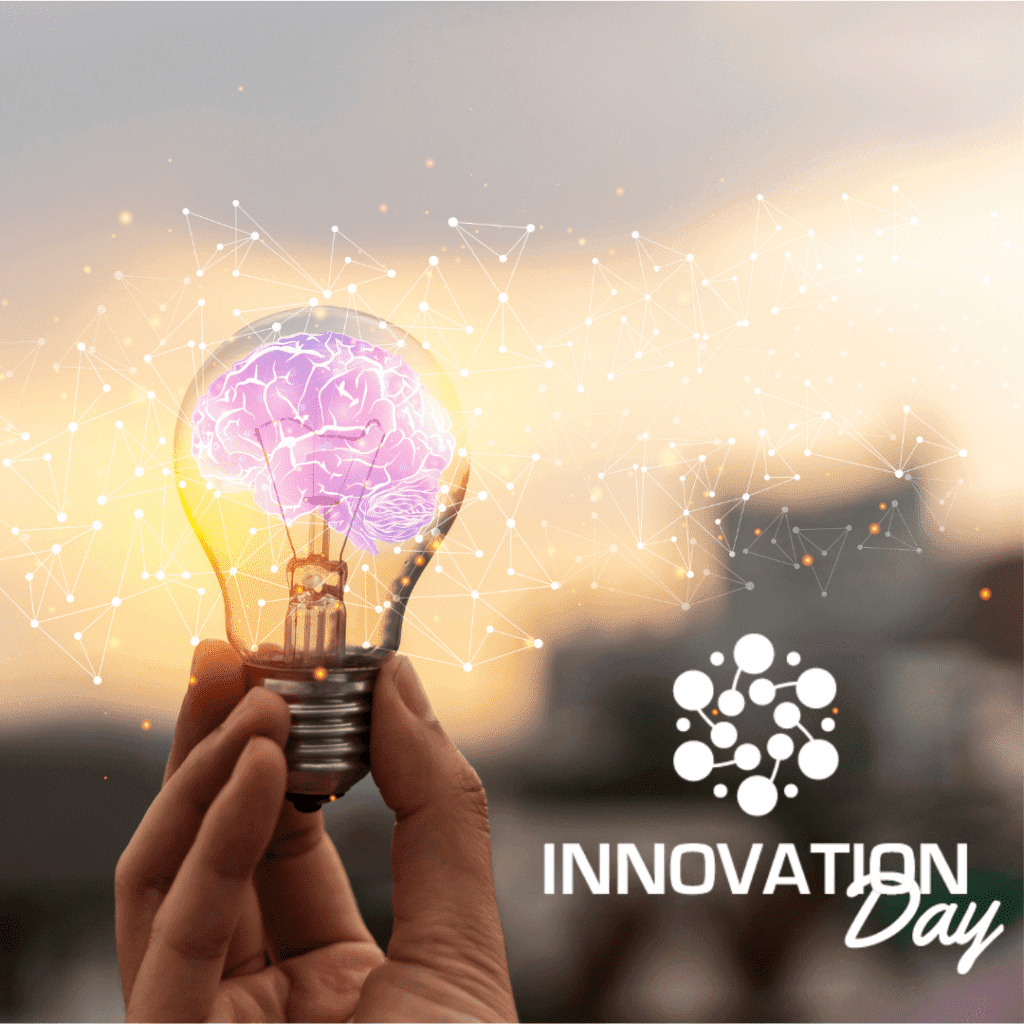
The future is not a distant concept; it's being built today. As we look towards 2025, understanding the key innovations shaping our world becomes crucial. This guide explores several pivotal trends poised to redefine various aspects of our lives, from how we work and communicate to how we address global challenges. By examining these advancements, we can better anticipate the opportunities and challenges that lie ahead and prepare ourselves for a rapidly evolving future.
Introduction: A Glimpse into 2025 and Beyond
The pace of technological advancement continues to accelerate, making it increasingly important to stay informed about emerging trends. This guide will delve into several significant innovations poised to impact our lives in the coming years, focusing on areas like artificial intelligence, sustainable technologies, biotechnology, and the evolving landscape of digital connectivity. We'll explore not just what these innovations are, but also how they might affect individuals, businesses, and society as a whole. Understanding these future trends allows us to adapt and thrive in a world that is constantly being reshaped by technology and innovation. Let's embark on this journey into the innovations shaping tomorrow, today.
Practical Guidance: Evaluating Emerging Trends
Navigating the ever-changing landscape of future technologies can be overwhelming. Here’s a framework for evaluating emerging trends and determining their potential impact:
1. Identify the Trend:
Begin by clearly defining the technology or innovation you're evaluating. Research its core principles, key applications, and current stage of development. Are we talking about advancements in gene editing, the proliferation of IoT devices, the development of more efficient energy storage, or the rise of decentralized autonomous organizations (DAOs)? A clear understanding of the foundational elements is paramount. For example, if considering advancements in AI, distinguish between different types like machine learning, deep learning, and neural networks. Each has unique capabilities and potential applications.
2. Assess the Maturity Level:
Determine where the technology lies on the maturity curve. Is it still in the research and development phase, undergoing early adoption, or already widely deployed? Technologies in the early stages of development carry greater risk but may also offer significant potential for disruptive innovation. Technologies with wider adoption may provide more immediate benefits but with less groundbreaking potential. Look for signals such as peer-reviewed publications, pilot programs, and early commercial deployments to gauge the maturity level. Consider resources like Gartner's Hype Cycle [ Gartner Hype Cycle ] for a visual representation of technology maturity.
3. Evaluate Potential Applications:
Explore the diverse ways the technology could be applied across various industries and sectors. Consider both immediate applications and potential long-term impacts. Could it revolutionize healthcare, transform manufacturing, enhance education, or address climate change? For instance, consider blockchain technology. While often associated with cryptocurrencies, it has far-reaching applications in supply chain management, digital identity verification, and secure data storage. Evaluating the breadth of potential applications is key to understanding the technology's overall significance.
4. Analyze the Challenges and Risks:
Identify the potential challenges and risks associated with the technology, including ethical considerations, regulatory hurdles, security vulnerabilities, and potential unintended consequences. Every innovation comes with its own set of challenges. For example, the widespread adoption of autonomous vehicles raises concerns about job displacement for professional drivers, ethical dilemmas in accident scenarios, and the need for robust cybersecurity measures. Addressing these challenges proactively is crucial for responsible innovation.
5. Consider the Ecosystem:
Examine the broader ecosystem surrounding the technology, including the availability of talent, infrastructure, investment, and supporting technologies. A thriving ecosystem is essential for successful adoption and deployment. For example, the development of electric vehicles depends not only on battery technology but also on the availability of charging infrastructure, government incentives, and a skilled workforce to manufacture and maintain the vehicles. A strong ecosystem creates a virtuous cycle of innovation and growth.
6. Check for Relevant Standards and Regulations
A critical aspect of evaluating innovations is understanding the applicable standards and regulations. Compliance ensures safety, interoperability, and responsible deployment. Standards organizations like the IEEE [ IEEE ] develop standards for various technologies. Regulatory bodies establish rules governing their use. Ignoring these aspects can lead to legal issues, safety hazards, and market access limitations.
Table: Examples of Emerging Technologies and Evaluation Criteria
| Technology | Maturity Level (2025 Estimate) | Potential Applications | Key Challenges |
|---|---|---|---|
| AI-Powered Personalized Medicine | Early Adoption | Targeted drug therapies, predictive diagnostics, personalized treatment plans | Data privacy, algorithmic bias, regulatory approval |
| Advanced Robotics in Manufacturing | Widespread Deployment | Automated assembly lines, precision manufacturing, enhanced quality control | Job displacement, high initial investment, cybersecurity risks |
| Decentralized Energy Grids | Pilot Programs | Increased grid resilience, reduced carbon emissions, energy access in remote areas | Grid stability, regulatory frameworks, infrastructure investment |
| Quantum Computing | Research and Development | Drug discovery, materials science, financial modeling, cryptography | Scalability, error correction, workforce skills |
Long-Term Considerations: Sustainability and Responsibility
While innovation holds immense promise, it's crucial to consider the long-term implications of these advancements. This includes addressing sustainability concerns, promoting responsible development, and mitigating potential negative impacts.
1. Environmental Impact:
Assess the environmental footprint of the technology throughout its entire lifecycle, from raw material extraction to manufacturing, usage, and disposal. Consider factors such as energy consumption, greenhouse gas emissions, resource depletion, and waste generation. Strive for technologies that minimize environmental impact and promote sustainability. For example, the transition to renewable energy sources like solar and wind power can significantly reduce carbon emissions, but it's also important to consider the environmental impact of manufacturing solar panels and wind turbines, as well as the responsible disposal of these components at the end of their lifecycle.
2. Social Equity:
Ensure that the benefits of technology are distributed equitably across society and that no one is left behind. Consider the potential impact on employment, access to education, healthcare, and other essential services. Promote technologies that empower individuals, reduce inequality, and foster social inclusion. For example, while automation can increase efficiency and productivity, it also raises concerns about job displacement. It's important to invest in retraining programs and create new opportunities for workers affected by automation.
3. Ethical Considerations:
Address the ethical dilemmas raised by emerging technologies, such as privacy concerns, algorithmic bias, and the potential for misuse. Develop ethical guidelines and frameworks to ensure that technology is used responsibly and in accordance with human values. For example, the use of AI in facial recognition raises concerns about privacy and potential discrimination. It's important to establish clear rules and regulations governing the use of this technology to protect individual rights and prevent abuse.
4. Regulatory Frameworks:
Advocate for clear and effective regulatory frameworks that promote innovation while safeguarding public interests. Regulations should be flexible enough to adapt to rapidly evolving technologies but also strong enough to address potential risks and harms. For example, the use of drones is subject to a complex web of regulations governing airspace, safety, and privacy. These regulations are constantly evolving as drone technology advances and new applications emerge.
5. Cybersecurity Risks:
With the increasing reliance on digital technologies, cybersecurity has become a paramount concern. Protecting data, infrastructure, and systems from cyber threats is essential for maintaining trust and ensuring the responsible use of technology. A proactive approach to cybersecurity involves implementing robust security measures, educating users about potential risks, and collaborating across industries to share threat intelligence and best practices. For example, the Internet of Things (IoT) presents new cybersecurity challenges due to the vast number of connected devices and the potential for vulnerabilities. Securing these devices and protecting the data they collect is crucial for preventing cyberattacks.
6. Maintenance and Upgrades
Consider the long-term costs associated with maintaining and upgrading these innovations. Technologies often require regular updates to address bugs, enhance performance, and adapt to evolving security threats. Proper maintenance ensures optimal functionality and extends the lifespan of the technology. Neglecting maintenance can lead to performance degradation, security vulnerabilities, and ultimately, the failure of the technology. Budgeting for ongoing maintenance and upgrades is essential for maximizing the value of these innovations. Consider the total cost of ownership, not just the initial investment.
FAQ: Innovations Shaping the Future
- Q: What is the most important innovation to watch in 2025?
A: While numerous innovations are noteworthy, advancements in AI, particularly in areas like natural language processing and machine learning, hold significant potential to transform various industries. - Q: How can individuals prepare for the future of work in a rapidly changing technological landscape?
A: Focus on developing skills that are less likely to be automated, such as critical thinking, creativity, communication, and emotional intelligence. Continuous learning and adaptation are also essential. - Q: What are the potential risks associated with the widespread adoption of AI?
A: Potential risks include job displacement, algorithmic bias, privacy concerns, and the potential for misuse. Addressing these risks requires careful planning and responsible development. - Q: What role will sustainability play in future innovations?
A: Sustainability will be a critical driver of future innovation, with increasing focus on technologies that reduce environmental impact, conserve resources, and promote social equity. Green technologies and circular economy principles will become increasingly important. - Q: How can businesses leverage emerging technologies to gain a competitive advantage?
A: By identifying and adopting technologies that align with their strategic goals, investing in employee training, and fostering a culture of innovation. Experimentation and collaboration are key to unlocking the full potential of emerging technologies.
Disclaimer: This information is for informational purposes only and should not be considered professional advice.
Sources
- World Economic Forum. (2023). The Global Risks Report 2023. [ WEF Global Risks Report 2023 ]
- Gartner. (n.d.). Gartner Hype Cycle. [ Gartner Hype Cycle ]
- IEEE Standards Association. (n.d.). [ IEEE Standards ]
In conclusion, the innovations shaping tomorrow are diverse and impactful, ranging from advancements in AI and sustainable technologies to the evolution of digital connectivity. Evaluating these trends requires a structured approach, considering factors such as maturity level, potential applications, and associated risks. Long-term considerations, including environmental impact, social equity, and ethical implications, are crucial for responsible innovation. By understanding these key insights and embracing a forward-thinking mindset, we can navigate the future with confidence and create a world that is both technologically advanced and socially responsible.




